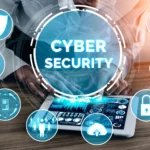Cloud FinOps is a term used to describe the practice of managing cloud spending and optimizing costs in the cloud environment. As cloud usage grows and becomes more complex, companies seek ways to manage their cloud costs effectively. In this blog post, we will delve deeper into the concept of Cloud FinOps, its importance, key principles, benefits, implementation, challenges, and future trends.
Understanding Cloud FinOps
Cloud FinOps involves managing cloud spending, optimizing costs, and allocating resources effectively in the cloud environment. This practice has gained significant importance due to businesses’ increased adoption of cloud computing services worldwide. Key concepts of Cloud FinOps include cloud spending, cost optimization, and resource allocation.
- Cloud Spending: Refers to the total amount of money spent on cloud services such as storage, computing power, and network bandwidth. Cloud FinOps helps companies manage cloud spending effectively and reduce wasteful spending.
- Cost Optimization: Refers to the process of identifying cost-saving opportunities in cloud infrastructure, applications, and services. Cloud FinOps helps companies optimize cloud costs by monitoring cloud usage, identifying wasteful spending, and making informed decisions about resource allocation.
- Resource Allocation: Refers to the process of allocating cloud resources effectively to meet business needs. FinOps helps companies allocate cloud resources based on business priorities, user demand, and cost considerations.
What Are The Principles of Cloud FinOps?
Cloud FinOps is based on three core principles – collaboration, accountability, and transparency.
- Collaboration: Cloud FinOps involves cross-functional collaboration between finance, operations, and development teams to manage cloud spending effectively. Collaboration helps identify cost-saving opportunities, optimize resource utilization, and achieve business goals.
- Accountability: Cloud FinOps ensures that all stakeholders are accountable for cloud spending and cost optimization. This principle involves setting clear roles and responsibilities, defining cost categories, and setting budgets and targets.
- Transparency: Cloud FinOps emphasizes transparency in cloud spending and cost optimization. This principle involves providing clear visibility into cloud usage, cost breakdowns, and cost-saving opportunities.
What Are The Benefits of Cloud FinOps?
Cloud FinOps offers several benefits to companies, including:
- Improved Cost Control: Cloud FinOps helps companies manage cloud spending effectively and reduce wasteful spending. This practice also helps identify cost-saving opportunities and optimize resource utilization.
- Better Resource Utilization: Cloud FinOps helps companies allocate cloud resources based on business priorities, user demand, and cost considerations. This practice ensures that cloud resources are used effectively to meet business needs.
- Greater Agility: Cloud FinOps helps companies respond to changing business needs quickly. This practice enables companies to scale up or down cloud resources based on user demand and business priorities.
- Enhanced ROI: Cloud FinOps helps companies achieve better ROI on cloud investments. This practice ensures that cloud resources are used effectively to meet business needs and optimize costs.
What Are The Steps To Implementing Cloud FinOps?
Here are the steps to implementing Cloud FinOps:
Step 1: Define Cost Categories
The first step in implementing Cloud FinOps is to define cost categories that align with business goals and user demand. Cost categories should be well-defined, granular, and aligned with business objectives. Examples of cost categories include computing, storage, network, and data transfer costs. Defining cost categories helps to identify areas of cloud spending that need optimization and allows for better resource allocation.
Step 2: Set Budgets and Targets
After defining cost categories, the next step is to set budgets and targets for cloud spending. This step involves setting financial goals based on business objectives and aligning budgets with cloud spending. Companies should also consider cost constraints when setting budgets and targets. Setting budgets and targets helps to ensure that cloud spending is aligned with business priorities and cost constraints.
Step 3: Monitor Cloud Usage and Cost Breakdowns
The third step in implementing Cloud FinOps with the help of FinOps tools helps in regularly monitoring cloud usage and cost breakdowns. Monitoring cloud usage and cost breakdowns enable companies to identify cost-saving opportunities, optimize resource utilization, and achieve business goals. Cloud cost management platforms and cloud analytics and reporting tools are helpful for monitoring cloud usage and cost breakdowns.
Step 4: Analyze and Optimize Cloud Infrastructure and Services
After monitoring cloud usage and cost breakdowns, the next step is to analyze and optimize cloud infrastructure and services. This step involves identifying cost-saving opportunities and optimizing resource utilization. Companies can achieve this by analyzing performance metrics and identifying underutilized and right-sizing resources. Analyzing and optimizing cloud infrastructure and services helps to improve business outcomes and achieve better ROI on cloud investments.
Step 5: Continuously Optimize Cloud Resources
The final step in implementing Cloud FinOps is to optimize cloud resources continuously. This step involves identifying cost-saving opportunities, optimizing resource utilization, and improving business outcomes on an ongoing basis. Cloud FinOps is an iterative process that requires continuous optimization to achieve optimal results.
By following these steps, companies can manage cloud spending effectively, optimize resource utilization, and achieve better ROI on cloud investments. Cloud FinOps is an essential practice for businesses that want to achieve cost savings, improve resource utilization, and achieve better business outcomes in the cloud environment.
What are the best practices for Cloud FinOps?
Implementing Cloud FinOps involves several best practices, including:
- Defining Cost Categories: Companies should define cost categories based on business priorities and user demand. This practice helps identify cost-saving opportunities and optimize resource utilization.
- Setting Budgets and Targets: Companies should set budgets and targets for cloud spending based on business goals and cost considerations. This practice ensures that cloud spending is aligned with business priorities and cost constraints.
- Monitoring and Reporting: Companies should monitor cloud usage and cost breakdowns regularly. This practice helps identify cost-saving opportunities, optimize resource utilization, and achieve business goals.
- Continuous Optimization: Companies should continuously optimize cloud infrastructure, applications, and services. This practice involves identifying cost-saving opportunities, optimizing resource utilization, and improving business outcomes.
In conclusion, FinOps is a crucial practice for businesses that operate in the cloud environment. By leveraging the principles of Cloud FinOps, companies can manage cloud spending effectively, optimize resource utilization, and achieve better ROI on cloud investments.








